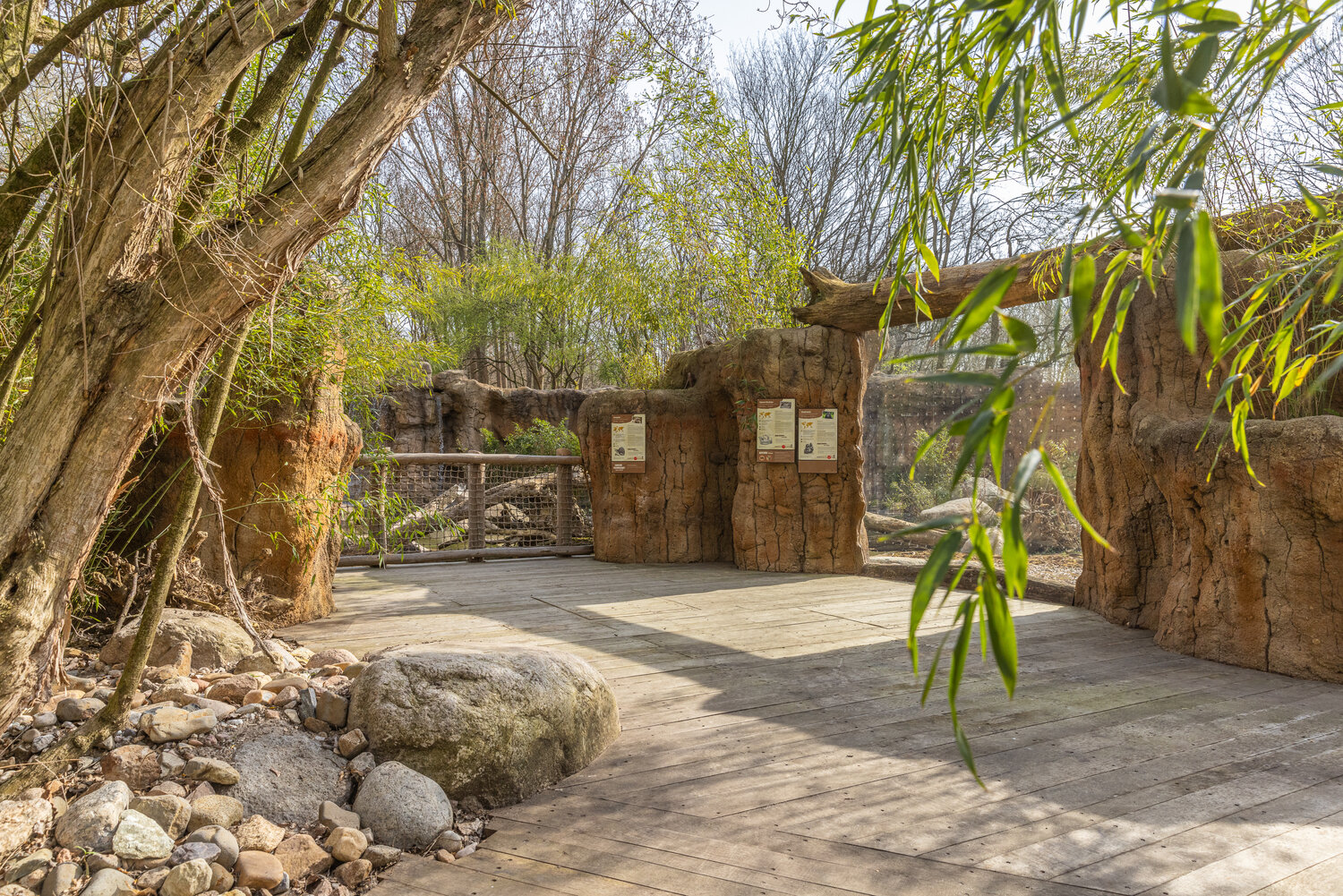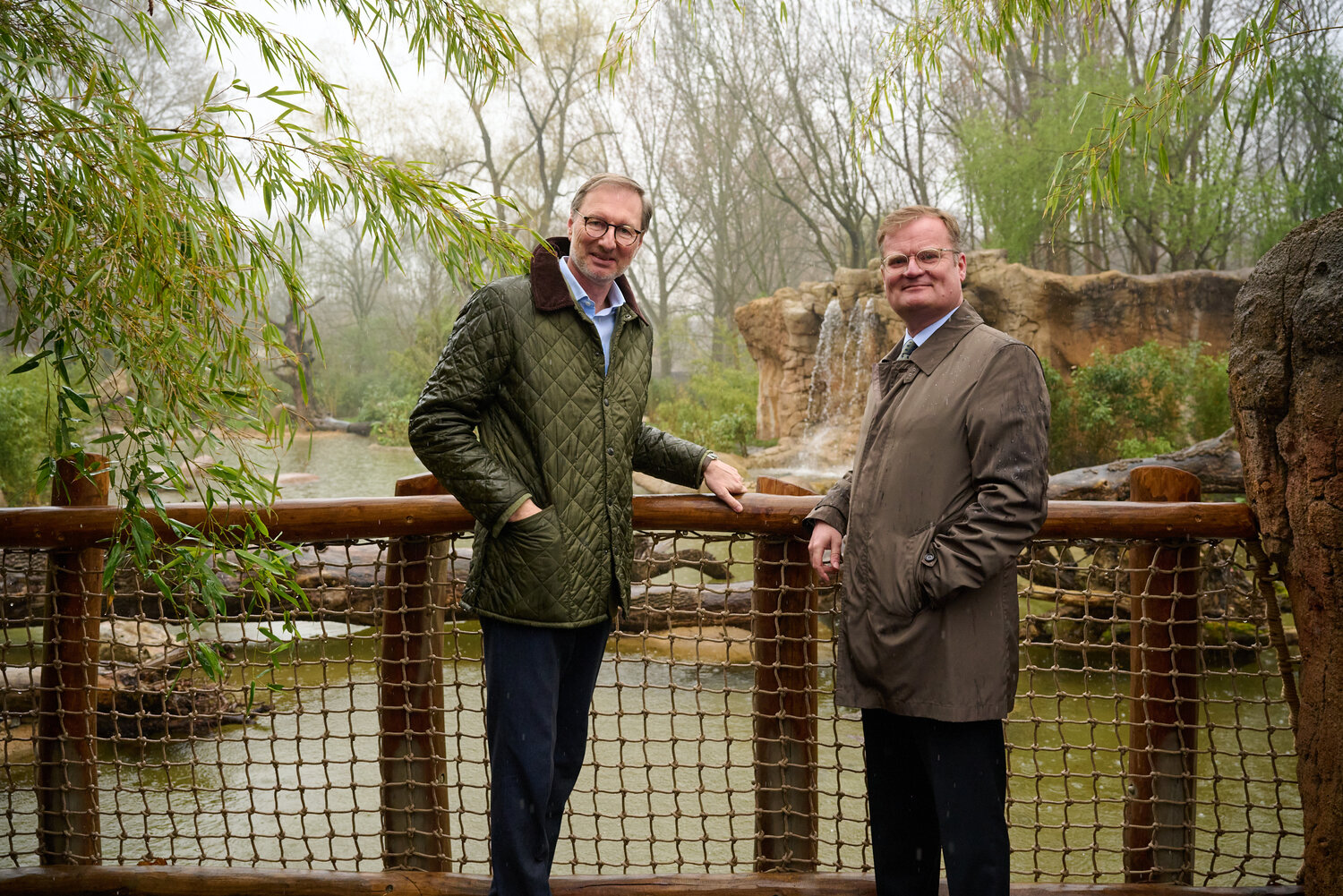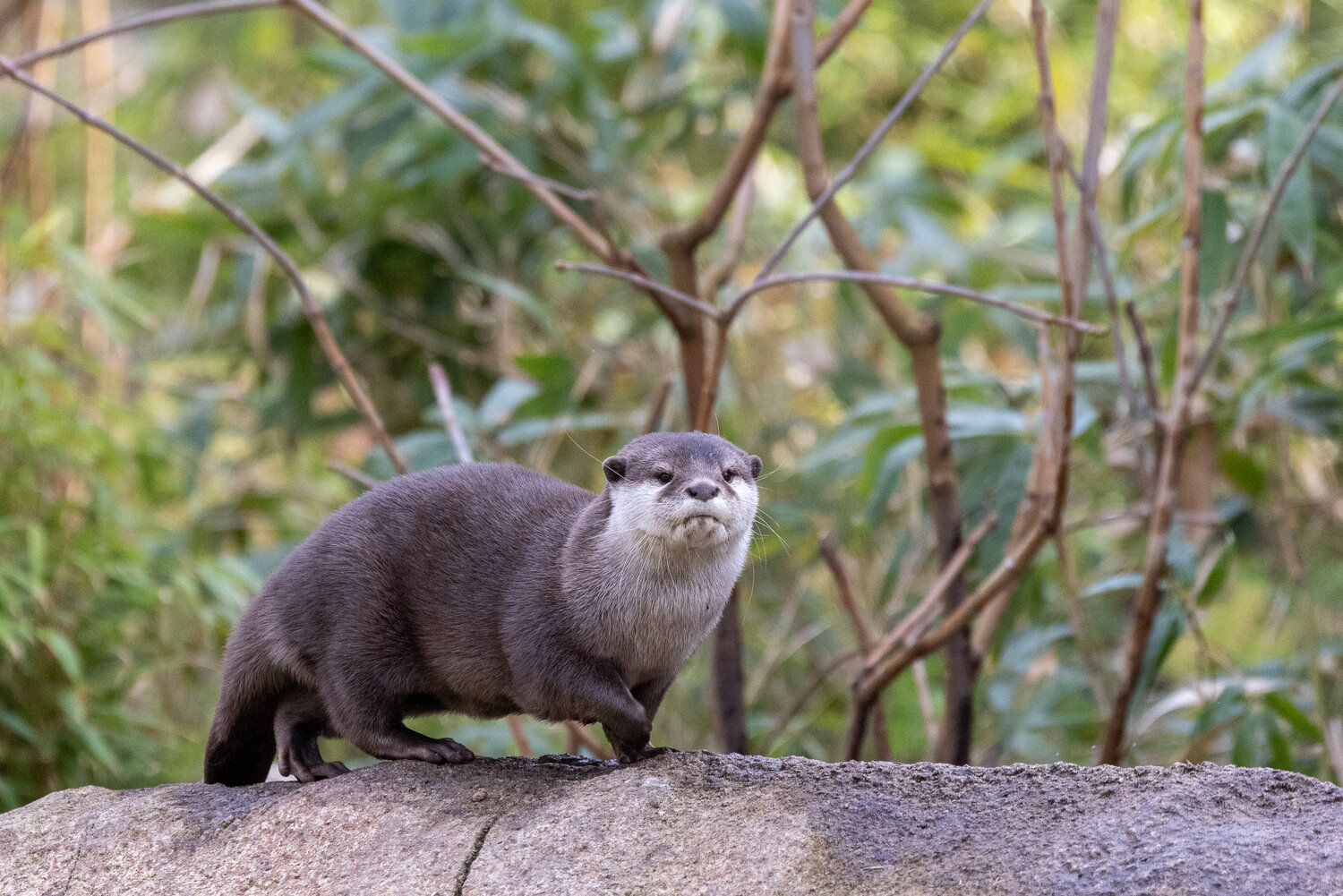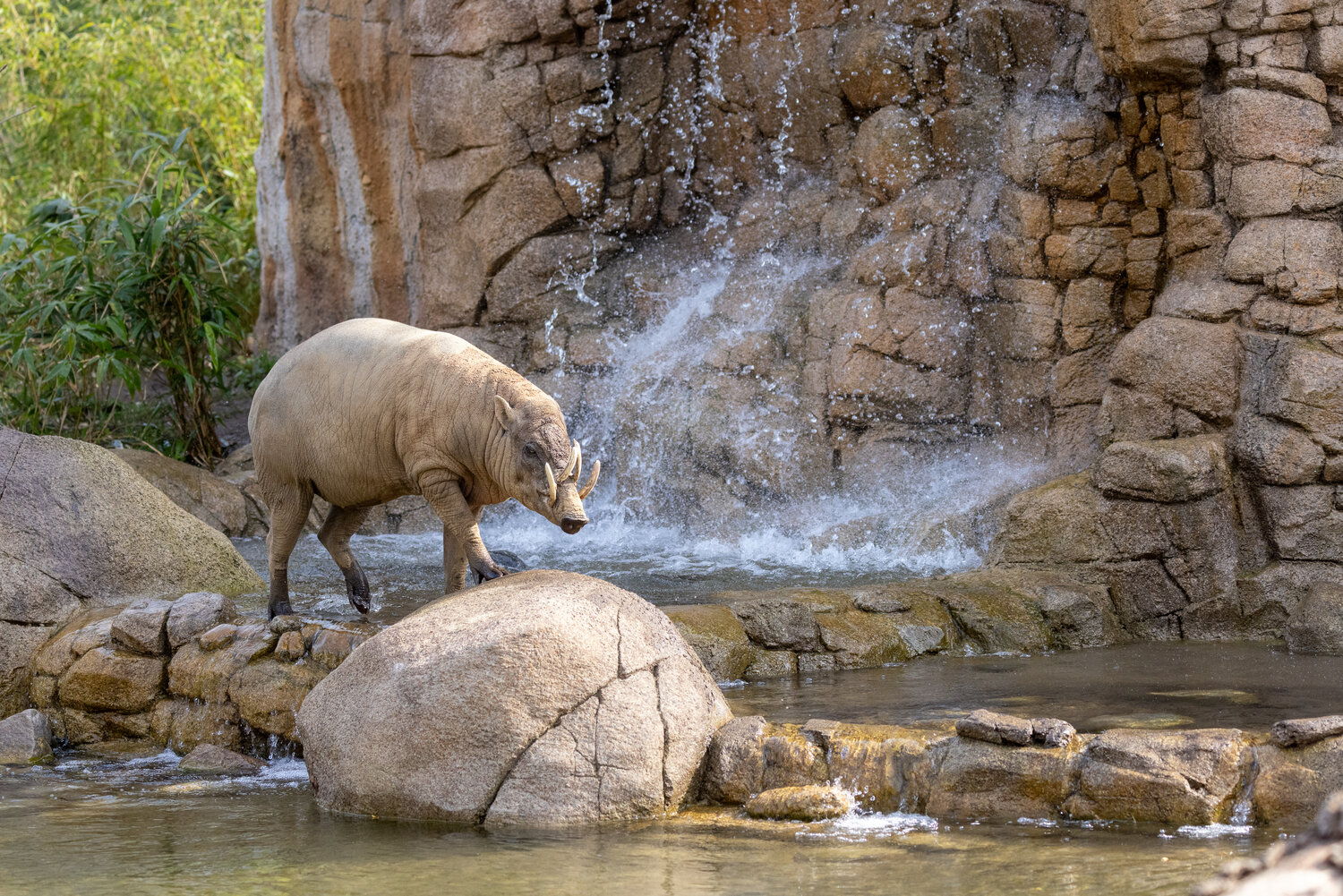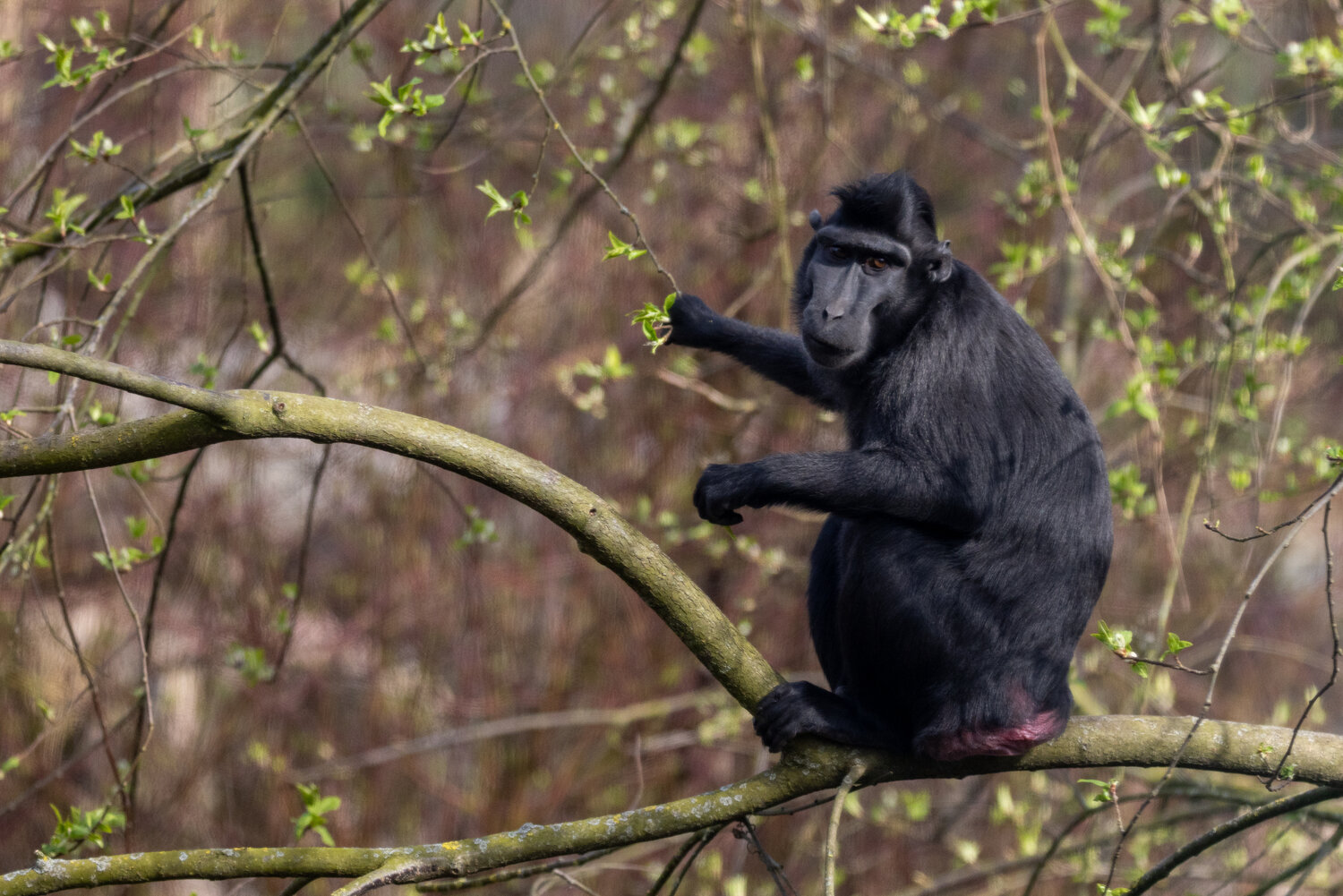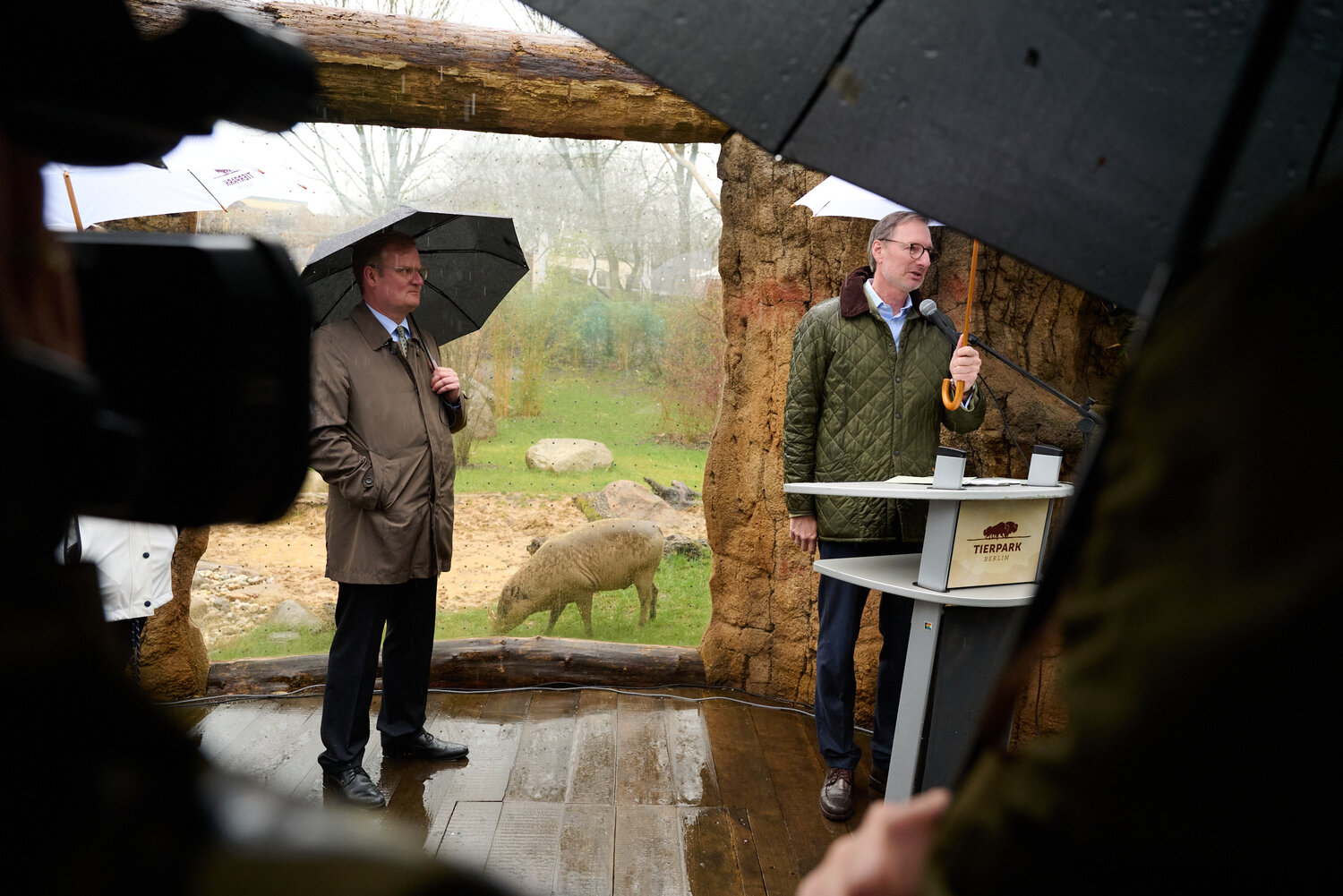A new attraction has opened at Tierpark Berlin just in time for the Easter holidays. Otter Island gives fascinating insight into one of the last unexplored areas of wilderness in faraway Indonesia, the biodiversity hotspot of the island of Sulawesi. The approx. 3,000 m² habitat is shared by a busy community of small-clawed otters, babirusas and crested macaques, who move around at their leisure on the land, in the water, and high up in the trees. The area around Otter Island is dedicated to the topic of biodiversity, with a fun and informative exhibition on evolution offering visitors the opportunity to learn about the origin of species and solve the mysteries of the tree of life.
Sulawesi, located in the eastern part of the Indonesian archipelago, is known for its unique flora and fauna. With an abundance of endemic species, it is home to a variety of creatures found nowhere else on Earth. From bizarre babirusas to critically endangered crested macaques, Indonesia is home to a remarkable variety of life forms, some of which can now be experienced by visitors to the Tierpark. “Our visitors get a unique glimpse of life in the fascinating Indonesian archipelago,” says Christian Kern, Zoological Director of Zoo and Tierpark Berlin. “Here, they can discover the different kinds of curious creatures that are at home on our planet and the various adaptations that evolve within the same ecosystem.”
On the trail of evolution
“According to current estimates, our planet is home to about 8.7 million species of plants, animals, fungi, algae and single-celled organisms. In our new exhibition, visitors can discover the diversity of species and unravel the secrets of evolution,” reports Zoo and Tierpark Director Dr Andreas Knieriem. “Otter Island provides a vivid example of how every species on our planet has its own special niche.” At eleven interactive stations, visitors can discover how a mammal like the otter can move as swiftly through the water as a fish, why the babirusa has such remarkable teeth, and how the crested macaque finds its way around the trees so well. But why do some animals look alike even though they are not genetically similar? And how can it be that the babirusa is more closely related to the hippopotamus than to the aardvark? Visitors to Otter Island can gather various pieces of evidence to solve the mysteries of evolution as they embark on a playful investigation into the origin of species. “I am delighted that Berlin’s state government has been able to support this exciting project,” says State Secretary Wolfgang Schyrocki of the Senate Department of Finance. “I am sure that the otters will quickly feel at home here. These eager, inquisitive and adaptable creatures have thick coats and very little gets to them – traits that remind me of the people of the Berlin. I’d like to give the otters a warm welcome to our city.”
The Otter Island inhabitants
- 2 small-clawed otters
- 3 crested macaques
- 4 babirusas
Facts and figures
- Area: Approx. 3,000 m², of which approx. 600 m² is water
- Views afforded through 32 m² of glass panes plus 4-metre-wide open viewing platform
- Construction started: Q3/2022
- Cost: €1.3 million in funding plus €100,000 donation
- Funding and support: Public funding from the Senate Department of Finance (SenFin)
- Companies involved in construction:
- Planning:
- Planning: Tierpark Berlin
- Tendering process / Site supervision of outdoor facilities: Rehwaldt Landscape Architects
- Structure planning: SFB Bauingenieure GmbH
- Health and safety coordinator: BHR Ingenieurgesellschaft mbH
- Soil survey: Bolab
- Surveyor: Vermessung Liedtke
- Planning:
- Implementation:
- Landscaping: Krahnstöver & Wolf
- Subcontractor, water technology: Spowatec
- Construction of superstructure / animal housing: Spielplatzmanufaktur in a bidding consortium with MxN Bau GmbH
- Didactic concept:
- stories within architecture
